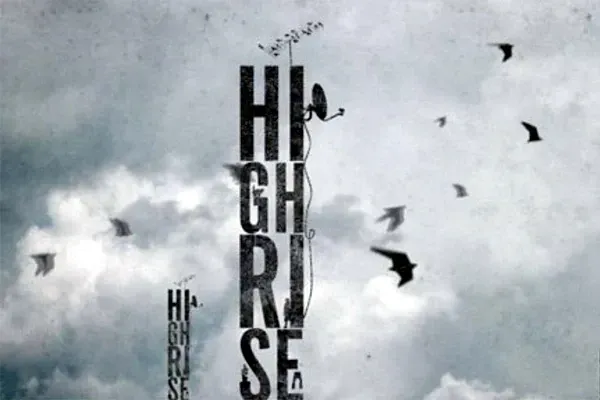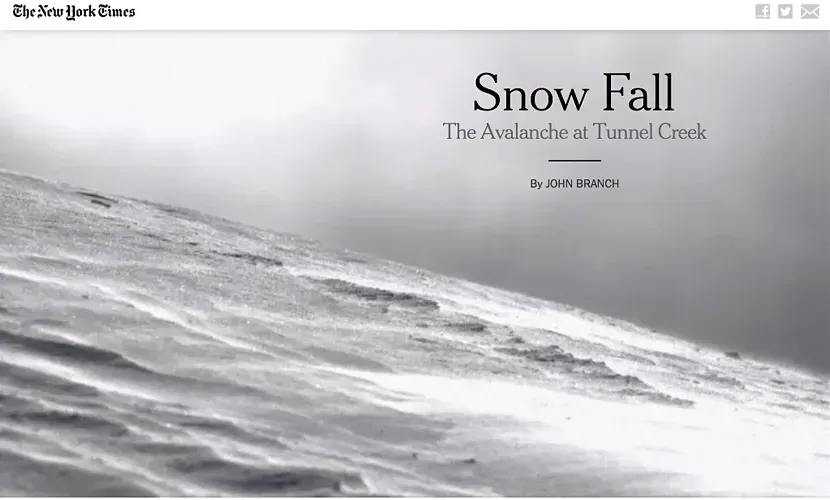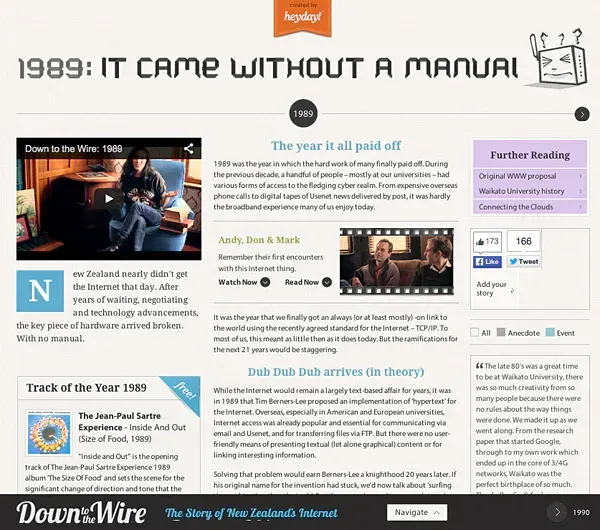Web Docs: Why Not?
Written by

Anna Jackson examines why interactive web docs are not being produced in New Zealand and asks whether kiwis can apply some DIY attitude to interactive storytelling.
* * *
In our last Transit blog, Fiona Milburn spoke with Ingrid Kopp, director of Digital Initiatives at the Tribeca Film Institute in New York, about creating interactive narratives. Ingrid will be in Auckland for the 2014 DOC EDGE LAB at AUT University, an event that provides (mainly) non-fiction storytellers with an opportunity to explore the possibilities of interactive and transmedia storytelling techniques.
As Ingrid discussed, in the past few years there has been a surge of interest in interactive storytelling, with projects such as The New York Times’ Snow Fall or Canada's National Film Board (NFB) Highrise capturing both critical and popular attention.
I’ve been interested in interactive storytelling for many years, since the days of CD-ROMs in fact, and I even set out to make the emergence of interactive, online and multiplatform documentary in Australia and New Zealand the subject of my PhD thesis. However, I wound up changing tack when I realised we weren’t about to see many examples of these new forms of interact factual storytelling here in New Zealand. I won’t delve too deeply into the reasons for this here, but to summarise in extreme brevity; the kinds of interactive factual works that are often referred to as webdocs or idocs are not cheap to make, require the technical expertise of developers and designers and are not guaranteed to reach wide audiences.
I think it’s fair to say that while traditional publishers such as The New York Times are embracing interactive content to capture audience interest and present stories in new ways, webdocs are largely experimental in that they explore the possibilities of using interactive tools to extend or enhance factual storytelling.
Innovation experiments (as webdocs are, in essence) are possible where organisations such as the NFB in Canada have a specific mandate to pursue both technical and creative innovation. Or, for commercial publishers such as The New York Times or The Guardian, there are some benefits in being seen as innovators or market leaders that might motivate investment in content that is not directly profit-generating.
Here in New Zealand though, this kind of content falls through the funding gaps. Although there is public funding for digital content through NZ On Air, and to some extent, Creative New Zealand, webdocs and similar kinds of interactive storytelling tend to fall outside existing funding objectives. A key issue is that in the current political and economic climate, investment in expensive content that may not reach a wide audience (or even a special interest audience not well-served by mainstream media) is difficult for funders to justify.
Call me an optimist, but I do believe that New Zealanders are resourceful and innovative, and while a lack of funding has certainly inhibited the emergence of the webdoc in Aotearoa I'm 100 percent certain that anyone who has a really strong desire to make one can find a way. Way back in 2010 a Wellington-based company called HeyDay created a kind of webdoc (Down to the Wire) to celebrate 50 years of the Internet in New Zealand just because they could (and, to show off the fact that they could). Creative agencies are coming up with clever ways to tell factual stories with the aid of new technologies all the time, like this web experience created by Assembly Ltd for Amnesty International Aotearoa that uses your Facebook timeline to put you in the shoes of a political prisoner.
But, what if you don’t have the brains and braun of an agency behind you, no developers want to be your friend and designers don’t want to know you? Or, maybe you’re tech-curious and just want to dip a toe in and experiment with interactive storytelling? There is a great interest, internationally in developing interactive storytelling tools that are free and accessible, and the idocs website does a great job at keeping an up to date list of these.
Not on this list is Scroll Kit, the company “code-free website builder” that went head to head with the might of The New York Times. Snow Fall, when it was released was showered with praise and awards in 2012. You can read a case-study by the project’s creators here, which details the months of work and technical expertise that went into creating the project. Then, upstart start-up Scrollkit came out with an online video demonstrating how a replica of the project could be made in Scroll Kit in an hour, which promptly resulted in a takedown order issued by The New York Times.
Scroll Kit doesn’t exist anymore. It was bought by Automattic, the owner of opensource web platform WordPress, the publishing system that is estimated to power around 20 percent of the Web. This is very bad news for people who have created projects using Scroll Kit, and shows the downside of using ‘ready to wear’ rather than bespoke applications for creating content. However, in the long run it could prove to beneficial for more would-be content creators as companies like Automattic strive to provide richer, more dynamic tools for content creation on the web to keep up with user demand. I'm watching this space with interest.
In the meantime, I'm going to try out some of the web and iPad applications for interactive storytelling that are listed on the i-docs site, and I’ll be reporting back with my findings. If I'm successful that means my next blog might just be a lot more interactive...

